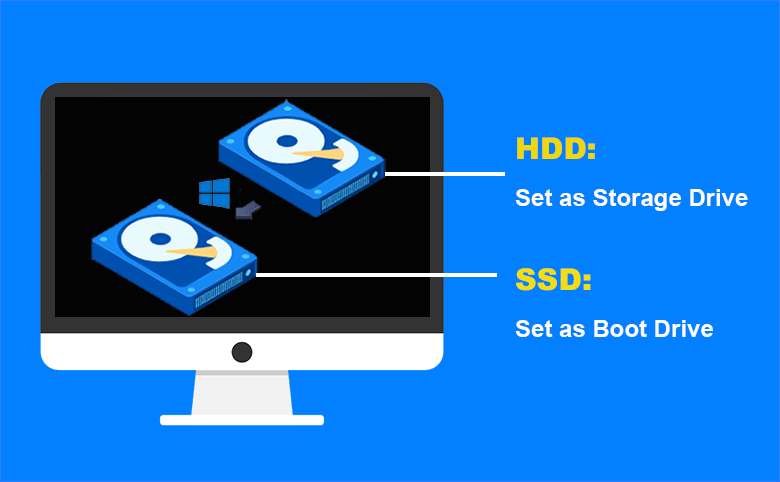
Step 3: Save your changes and restart your computer to see if you have fixed the problem - cloned SSD will not boot.įix 4: Run WinRE to Repair Windows Startup Step 2: Locate to the Boot option and change the boot mode to the one that works with the cloned SSD. Step 1: Start your Windows machine and enter the setup program with the shown key in the vendor logo screen. If you clone MBR HHD to GPT SSD or clone GPT HHD to MBR SSD, you need to change the boot mode from Legacy to UEFI or UEFI to Legacy. This fix works when the source disk and target disk are in different partition styles. After that, restart your Windows computer and it might successfully boot the cloned SSD. Step 4: Save the settings by referring to the screen instructions. Step 3: Find the Boot option and set the cloned SSD as the priority disk.

In the PC startup screen, you can see the key which is usually located on the lower-left corner. Step 2: Press the specific key like Del/Esc/F12 continuously to enter the setup program.

Step 1: Power on your Windows 10 computer. Make sure that the default boot disk is the cloned SSD in BIOS/UEFI. If the cloned SSD still doesn't boot, you can move to Fix 2. Then, check whether the SSD can be booted up. When the SSD is already installed into your PC with a SATA cable, you can use another SATA cable to help build the connection between the cloned SSD and Windows computer. If the cloned SSD is connected to your Windows 10 computer with a USB cable, you are suggested to replace the USB with a SATA cable.

However, sometimes you might be stopped from getting the improved using experience, because the cloned SSD doesn’t boot, which makes the disk clone meaningless.

SSD Not Booting after CloneĪfter you successfully clone the original Windows 10 hard drive to the SSD, it's time to boot your Windows computer from the SSD for enjoying the fast and smooth OS environment generally.


 0 kommentar(er)
0 kommentar(er)
